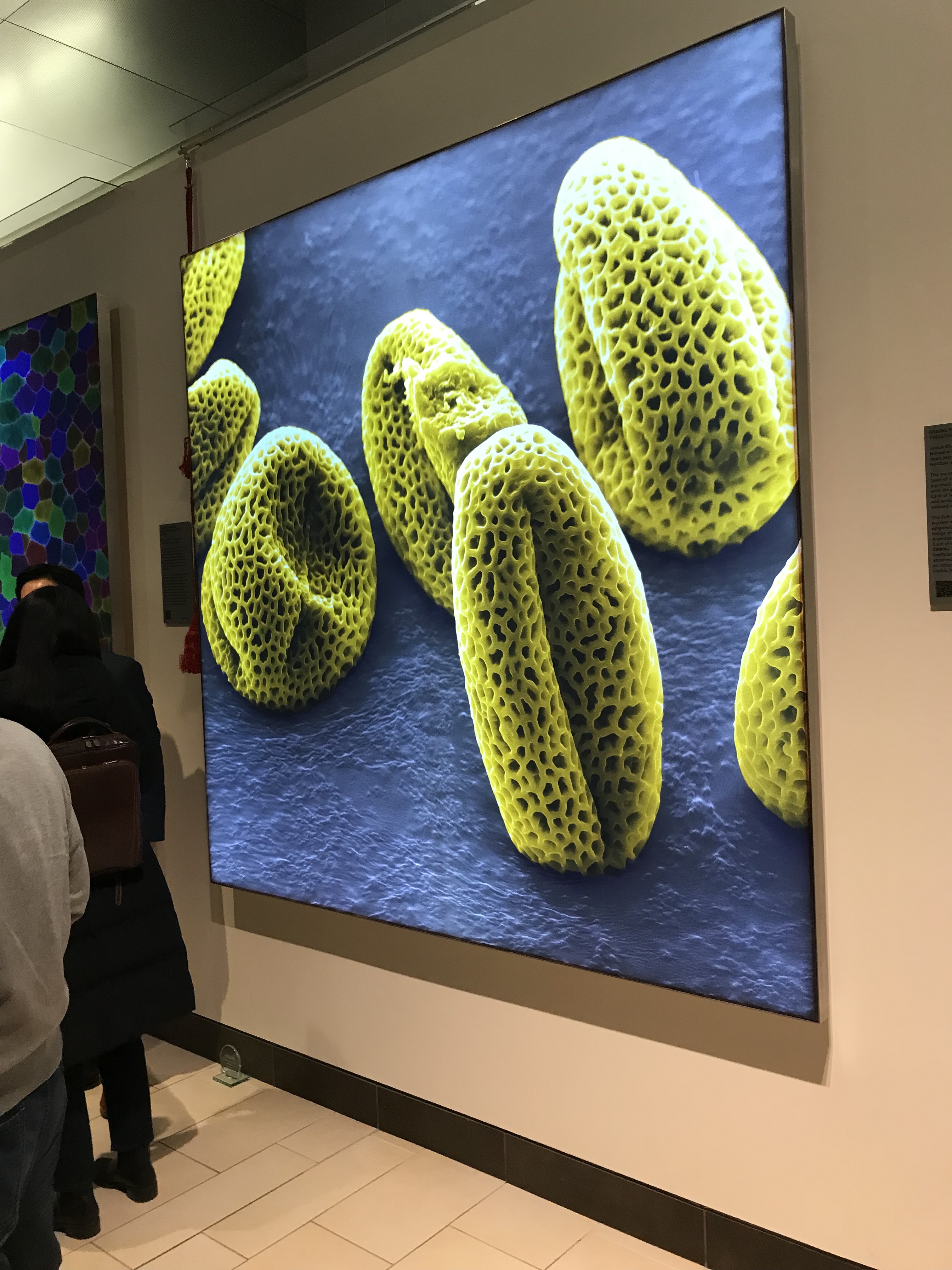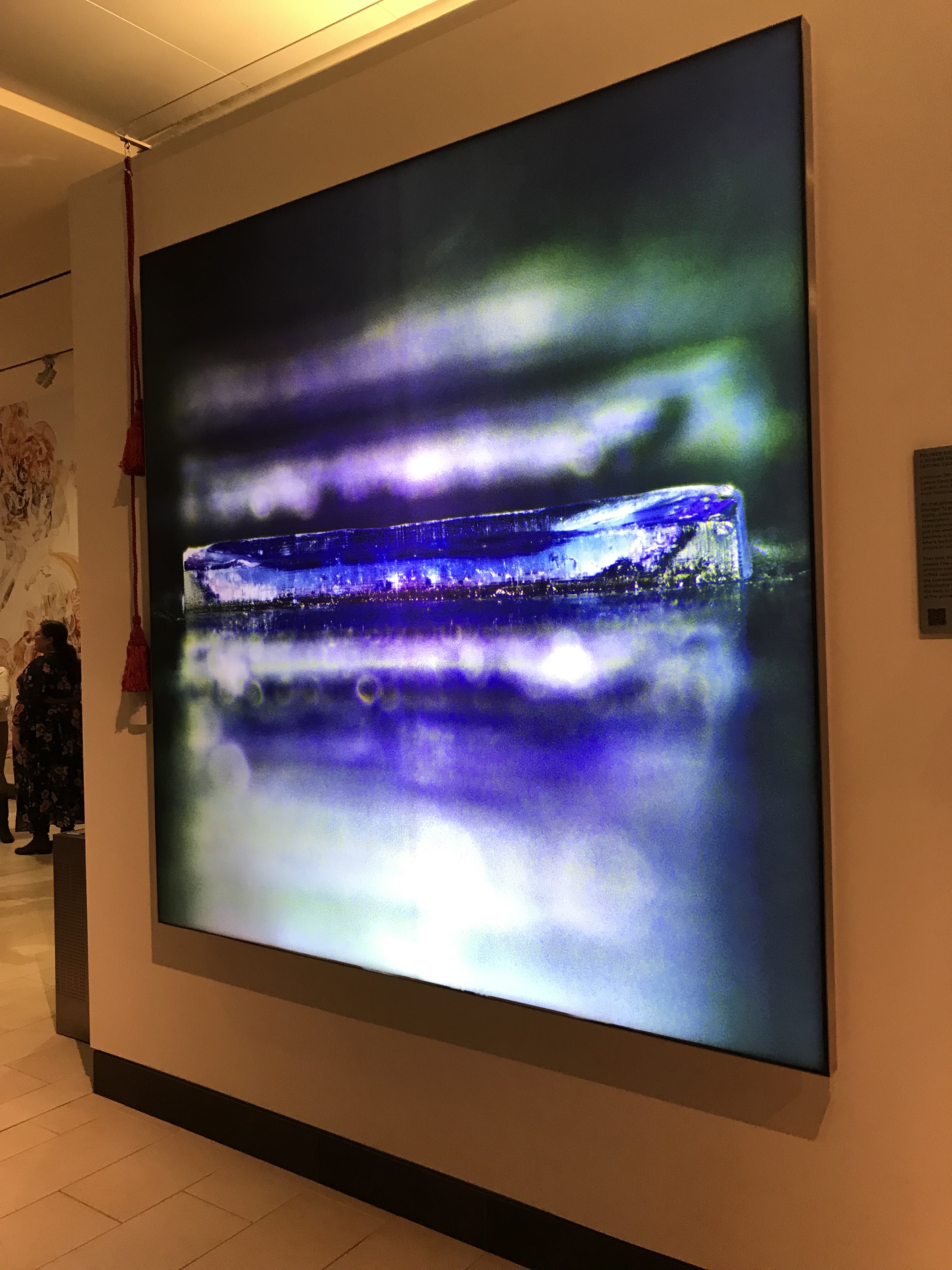News J-WAFS community members win 2023 Image Awards
Award-winning visuals from the Koch Institute event include one from J-WAFS PI Mary Gehring’s lab and another from J-WAFS Fellow Rhoda Zhang.
Carolyn Blais, J-WAFS April 10, 2023
Last month MIT’s Koch Institute for Integrative Cancer Research hosted the 13th annual Image Awards. The awards were established to recognize and publicly display the extraordinary visuals produced by life sciences and biomedical research at MIT. This year’s event honored a range of researchers and their innovations, including two J-WAFS community members. Each image creator gave a lightning talk to explain the stories behind their award-winning visuals. The images were then viewed at a reception in the lobby of the Koch Institute. The exhibit will remain on display to the MIT community and the public for the next year.
Junsik Choi is a postdoc in J-WAFS PI Mary Gehring’s lab. The Gehring Lab’s primary research focus is on plant epigenetics, which refers to the heritable information that influences plant cellular function but is not encoded in the DNA sequence itself. The lab is currently working on a J-WAFS seed grant to accelerate the production of genetic diversity to generate plant populations for agriculture that are more resilient to challenging environmental conditions due to climate change.

Choi’s work on plant epigenetics and cell biology focuses on how nuclei affect and interact with epigenetic information. He studies Arabidopsis thaliana, a plant that can grow up to just one-foot tall, making it easy to work with in the lab. Choi studies the plant’s cells, specifically a structure called the nuclear lamina — a meshwork protein structure under the inner nuclear membrane. Choi found that nuclear lamina are very important in plant reproduction. His image, shown to the right, is of pollen from Arabidopsis thaliana that has defects in the nuclear lamina structure. This is important because this kind of defect means the lamina cannot properly regulate nuclear function, genetic information, genetic disease, and overall plant development, ultimately leading to the death of the plant.
Linzixuan (Rhoda) Zhang is a 2022-23 J-WAFS Fellow and PhD candidate in the Department of Chemical Engineering. Zhang is a member of Professor Robert Langer’s lab and research scientist Ana Jaklenec’s group. Zhang was awarded the J-WAFS fellowship for her work on a micronutrient delivery platform that fortifies foods with essential vitamins and nutrients. Vitamin A is present in different vegetables, but when the vegetables are cooked, vitamin A can easily degrade. Zhang helped develop a group of biodegradable polymers that can encapsulate vitamin A and effectively stabilize its micronutrients under cooking and storage conditions. This very work won an Image Award last year in 2022.

Zhang worked on other encapsulating technology with postdoc Jooli Han which produced another award-winning image for the Koch event this year, seen on the left. Zhang and Han developed a way to encapsulate mRNA vaccine dosages. Zhang explained that mRNA vaccines involve something called lipid nanoparticles (LNPs). When mRNA is injected into the body it can be easily destroyed by the immune system. LNPs, therefore, are needed to act as a vehicle to safely encapsulate the mRNA, protecting it from degradation and assisting in the delivery of mRNA into cells. Han explained that vaccine equity is when everyone has fair and just access to vaccination. One barrier to more widely administering the recent Covid-19 mRNA vaccine, for example, was the fact that it needed to be stored and transported at a negative temperature to maintain its stability and effectiveness. For better vaccine equity in places with cold storage limitations, the researchers used a technology called StampEd Assembly of polymer layers, or SEAL. This allows administration of multiple doses with a single injection. In other words, a vaccine that requires multiple boosters, like the Covid-19 vaccine, can be injected one time with all the dosages included in the initial shot. The dosages are then released at different time points as needed. The team found that there was improved LNP stability when a layer of polymer coating was applied to the bottom of the SEAL microparticle. It is believed that the coating acted as a shield to further protect and stabilize the mRNA LNP. In the image, the polymer coating can be seen in pink, and the dried mRNA vaccine can be seen in blue.
